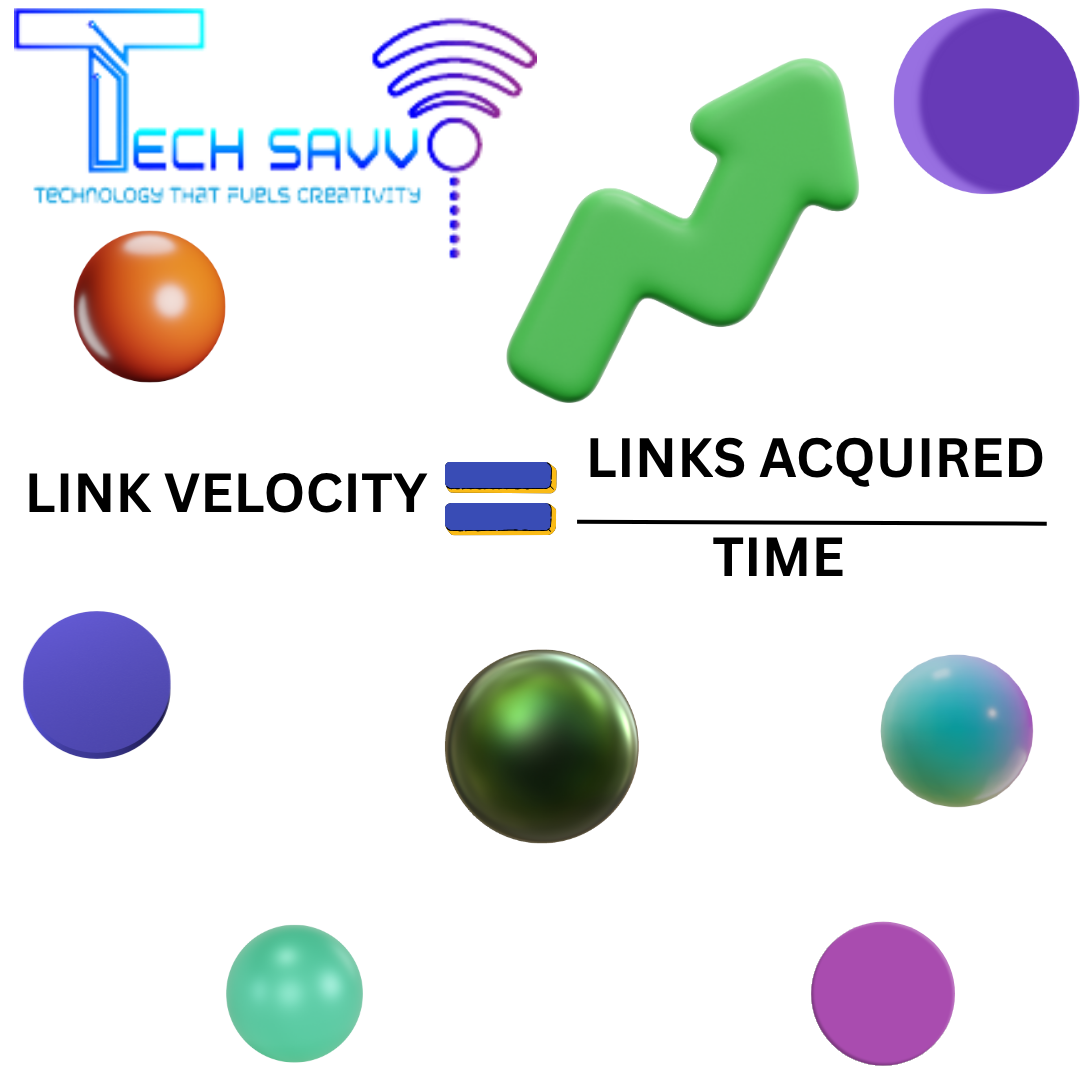What is Link Velocity? How It Impacts SEO and Rankings

Strong 8k brings an ultra-HD IPTV experience to your living room and your pocket.
In the rapidly evolving field of Search Engine Optimization (SEO), it is crucial to comprehend how search engines evaluate your website to achieve higher rankings and sustained visibility.
One important yet often debated metric in this interpretation is link velocity.
At its core, link velocity is the rate at which a website gains new backlinks over a given period. It's not just about how many links you have, but also about how quickly and in what pattern they accumulate. Consider it the pulse of your website's rising online reputation; a steady, strong pulse signals health, whereas an inconsistent or too fast one indicates problems.
How Link Velocity Impacts SEO and Rankings
Search engines, especially Google, utilize sophisticated computer programs to determine the importance and relevance of a website. Backlinks – which are links from other sites pointing to yours – are a big part of this calculation. Think of them as endorsements or "votes of confidence." But Google is smart enough to tell the difference between genuine, naturally earned links and ones that have been artificially created or bought. This is where link velocity comes into play:
Signals Trust and Authority: An ongoing and gradual rise in high-quality backlinks reflects that your website is naturally acquiring recognition and trust in its niche. This organic growth suggests that your content is valuable, shareable, and a credible resource. Search engines reward this trust with higher rankings.
Indicates Content Freshness and Relevance: A consistent flow of fresh connections is frequently associated with regularly updated and relevant material. If your website continually publishes useful content that others wish to quote, search engines will see it as a dynamic and up-to-date resource.
Identifies Spam and Manipulation: The most important thing to watch for is a sudden, huge jump in backlinks, especially if they're coming from low-quality or irrelevant places. That kind of pattern immediately raises suspicion. Search engines see that as someone trying to cheat the system and boost their rankings unfairly, and that can lead to serious consequences.
Organic vs. Artificial Backlink Growth: Real-Life Examples
Natural growth of organic backlinks happens when other websites link to your content organically, as they perceive it to be valuable, informative, or entertaining. This serves as a true endorsement of the quality of your site.
Characteristics:
Steady and Consistent: Links are obtained gradually, typically showing slight variations, but lacking any abrupt, unexpected spikes.
Diverse Sources: Links originate from a range of credible websites that are pertinent to your niche.
Contextual Relevance: The links are seamlessly integrated into the content, providing clarity to the reader.
Varying Anchor Text: The text used for the links (anchor text) is varied and organic, rather than consistently focused on keywords.
Example: A Niche Tech Blog
Imagine "Tech Innovations Hub," a blog that consistently publishes in-depth reviews of new gadgets, insightful articles on emerging technologies, and original research.
Months 1-3: The blog is new, gaining a handful of links from personal networks and initial shares. Link velocity is low but steady (e.g., 5-10 new links/month).
Months 4-6: One of their in-depth analyses of a new AI trend goes viral. Other tech blogs, news sites, and industry influencers naturally link to their article as a source. This causes a temporary, natural spike in link velocity (e.g., 50 new links in a week), followed by a return to a slightly higher, but still steady, rate (e.g., 20-30 new links/month). This spike is understood by Google as content virality, not manipulation.
Month 7 onwards: They continue to publish high-quality content. Their increased authority from the viral piece leads to more consistent editorial links from reputable sources, guest post opportunities, and mentions in industry roundups. Their link velocity remains healthy and gradually increases (e.g., 30-50 new links/month) as their brand recognition grows.
This reliable output of quality content promotes organic growth, strengthening their domain authority and advancing their rankings for applicable keywords.
Artificial Backlink Growth (The Dangerous Kind) 🚨
Building backlinks artificially relies on sneaky tricks aimed at fooling search engines into believing a website is more important or credible than it is. These methods go against Google's Webmaster Guidelines and can result in serious consequences for the site.
Characteristics:
Sudden, Unnatural Spikes: An abrupt increase in links over a very short duration, often without a legitimate cause (like viral content).
Irrelevant or Low-Quality Sources: Links originating from sites that lack a thematic relationship to your own, or from dubious "link farms" and Private Blog Networks (PBNs).
Over-optimized Anchor Text: An excessive proportion of links utilizing exact-match keywords as anchor text, which seems contrived and unnatural.
Paid or Exchanged Links: Links obtained through direct financial transactions or mutual agreements solely for SEO enhancement.
Example: An E-commerce Store (Penalty Scenario)
Consider "Budget Gadgets," a new e-commerce store selling electronics. Desperate for quick rankings, they decide to invest in a "cheap SEO package" promising thousands of links in a week.
Week 1: After purchasing the service, their backlink profile shows an immediate surge of 500+ new links from various seemingly unrelated websites (e.g., foreign language blogs, generic directories, obscure forums). The anchor text is often exact-match keywords like "buy cheap electronics online."
Weeks 2-4: Initially, they might see a slight, temporary bump in rankings due to the sheer volume of links.
Month 2: Google's algorithms detect this highly unnatural link velocity and pattern. "Budget Gadgets" receives a manual penalty notification in Google Search Console or an algorithmic de-ranking. Their rankings plummet, traffic disappears, and their brand reputation is severely damaged. It can take months, or even years, to recover from such a penalty, requiring extensive link disavowal efforts and a complete change in strategy.
The Key Point
Link velocity serves as a nuanced yet significant indicator for search engines. Although maintaining a robust and expanding backlink profile is essential for SEO, the way and pace at which this growth occurs are just as critical, if not more so. Concentrate on obtaining high-quality, relevant backlinks through authentic content creation, effective outreach, and establishing real connections. This focus on organic growth will result in a healthy link velocity, build trust with search engines, and ultimately lead to sustainable enhancements in your SEO and search rankings.
Note: IndiBlogHub features both user-submitted and editorial content. We do not verify third-party contributions. Read our Disclaimer and Privacy Policyfor details.




